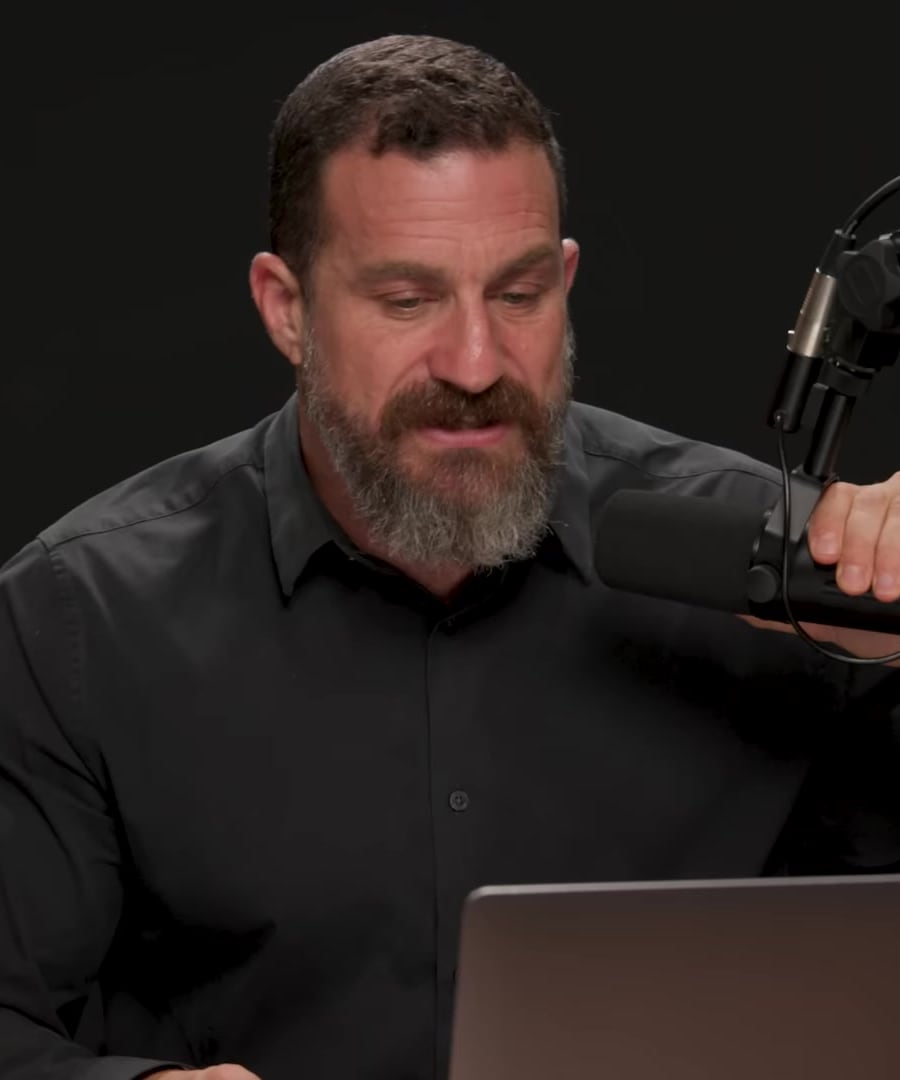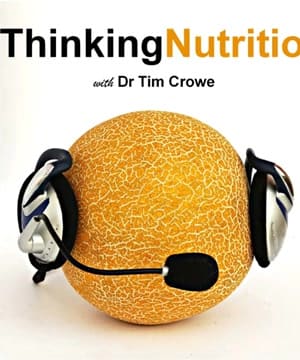Which experts do not recommend full-body MRIs?
Sources:
Experts like Dr. Charles Galanis and Dr. Sheri Dewan express reservations about full-body MRIs. Dr. Galanis notes the issues of false positives and the inefficiency of such broad screening methods for healthy individuals, emphasizing that it's not currently recommended for everyone due to cost-effectiveness and the likelihood of unnecessary radiation exposure in some studies 1. Similarly, Dr. Dewan highlights the controversy around using MRI technology as a screening tool, pointing out that false positives can lead to unnecessary worry and additional medical expenses 2.
RELATED QUESTIONSWho recommends full-body MRIs?
Sources:
Experts who recommend full-body MRIs include:
-
Dr. Darshan Shah: Dr. Shah endorses the use of full-body MRIs, particularly from companies like Pernuvo, for detecting solid masses like pancreatic, liver, and brain tumors. He suggests getting these scans periodically for early diagnosis 1.
-
Dr. Peter Attia: Discusses using whole-body MRIs for cancer screening, despite acknowledging the potential for false positives. He sets expectations with patients about the likelihood of discovering benign abnormalities that require further investigation 2.
-
Dr. Andrew Huberman: While he notes the psychological and financial considerations, Dr. Huberman has personally undergone a full-body MRI and found the experience informative, suggesting it can be beneficial for people willing to manage potential false positives and the associated anxieties 3.
Their support highlights the benefits of early detection through full-body MRIs, albeit with a careful approach to managing false positives and subsequent follow-ups.
RELATED QUESTIONS-
How often should one get a full-body MRI?
Sources:
The frequency of full-body MRI scans is generally suggested to be every one to two years, depending on individual risk factors and concerns.
-
Dr. Darshan Shah recommends getting a full-body MRI like the Pernuvo scan every couple of years, especially for detecting solid masses like pancreatic or liver tumors that would otherwise remain undetected until it's too late 1.
-
Dr. Peter Attia notes a similar recommendation, stating that while the MRI scans can be incredibly informative for early cancer detection, they also come with the caveat of dealing with false positives. He suggests setting expectations with patients about these potential follow-ups when considering the frequency of such scans 2.
-
Dr. Rachel Brem specifically advises annual MRI scans in the context of breast cancer surveillance for individuals with a significant family history or genetic predisposition 3.
Ultimately, the frequency may vary based on your personal health profile and consultation with a healthcare provider.
RELATED QUESTIONS-
How early should one consider doing full-body MRIs?
Sources:
Experts suggest varying recommendations on when to start full-body MRIs, influenced largely by individual circumstances such as age, family history, and genetic predispositions.
-
Dr. Kyle Gillette suggests navigating the start of cancer screenings, including full-body MRIs, based on family history and preventive medicine approaches. This helps balance the benefits of early detection with the risk of false positives, called incidentalomas 1.
-
Andrew Lacy from Prenuvo emphasizes that their MRI technology is designed to detect early-stage cancers reliably, potentially making it suitable for individuals even before symptoms appear. This approach is beneficial in identifying conditions early, such as in cases where other methods might miss aggressive cancers like pancreatic or liver cancers 2.
-
Peter Diamandis mentions that technologies like full-body MRIs can be part of an annual health check for those particularly concerned about early cancer detection and other health markers, highlighting advancements in precision and reduced scanning times 3.
-
Andrew Huberman shares his personal experience, suggesting that while a full-body MRI can indeed provide significant health insights, its necessity may depend on individual anxiety levels and financial capacity. He also notes that findings may prompt further investigations and psychological impacts 4.
-
Dr. Childs and Dr. Sodickson discuss the importance of active surveillance for individuals with known risk factors for diseases such as prostate and breast cancer. They advocate for periodic MRIs to ensure any developments are caught early, suggesting a proactive approach even in lower-risk populations 5.
Given these insights, beginning full-body MRIs may be considered earlier if there are significant risk factors or family history, usually in one's 30s or 40s. For others, especially without these risks, starting in their 50s might be reasonable. Always consult with a healthcare provider to make informed decisions.
RELATED QUESTIONS-
Would 25 be too early?
Sources:
The decision to undergo a full-body MRI at 25 can be nuanced. Here are key insights from experts on this matter:
-
Dr. Ahvie Herskowitz highlights that younger individuals are increasingly being diagnosed with cancers traditionally seen in older populations like breast, lung, and colon cancers. This trend isn't solely due to increased screening 1. This suggests a possible justification for earlier screenings in high-risk groups.
-
Dr. Kyle Gillette acknowledges the pros and cons of early cancer screening, including MRIs. He emphasizes balancing the risk of false positives with the benefits of early detection. This is especially true if there is a significant family history or known risk factors. He suggests that full-body MRIs might produce incidental findings, which are often benign but can lead to unnecessary stress and additional tests 2.
-
Dr. Sheri Dewan points out that the use of full-body MRIs as a screening tool is controversial due to the probability of false positives. Instead, technological innovations are pushing towards more precise and less invasive methods like blood biomarkers for early disease detection, which could be more beneficial in the future 3.
-
Dr. Daniel Sodickson advocates for active surveillance, especially for individuals with known risk factors. Regular monitoring can help catch diseases early without needing excessive immediate interventions. This approach is seen as extending to lower-risk individuals to improve early detection rates 4.
-
Will Cole shares that while full-body MRIs can lead to overdiagnosis, they also allow for early detection of significant health issues, often in early stages when they are most treatable. The user experience and diagnostic context provided by professionals like those at Prenuvo aim to mitigate unnecessary worry and follow-ups 5.
In conclusion, while 25 might seem early for those without significant risk factors, those with a family history of early-onset cancers or other risk indicators might consider it more seriously. Consulting with a healthcare professional to evaluate personal risk is crucial.
RELATED QUESTIONS-
What are significant risk factors for early cancer?
Sources:
Significant risk factors for early cancer, as highlighted by experts, include:
-
Diet and Lifestyle: Dr. Mark Hyman emphasizes that diets high in sugar and starch, and exposure to environmental toxins (like petrochemical plastics and endocrine disruptors) can turn on cancer genes. Obesity and type 2 diabetes also significantly raise the risk of various cancers such as colorectal, liver, pancreatic, and breast cancers 1.
-
Insulin and Obesity: Dr. Valter Longo points out that high insulin levels, diabetes, and obesity are major risk factors for cancer. Reducing abdominal and liver fat, and maintaining optimal blood glucose levels are crucial preventive measures 2.
-
Genetic Factors: Certain genetic predispositions, like BRCA1 mutations, increase the risk of specific cancers such as breast cancer. These genetic factors vary in their impact, with some individuals never developing cancer despite having the mutation 3. Family history of cancer also plays a critical role, particularly if multiple first-degree relatives have been affected 4.
-
Hormonal Influences: Dr. Susan Davis notes that early menopause reduces the risk for breast cancer due to fewer years of estrogen exposure, whereas untreated menopause before age 45 raises the risk of osteoporosis, cognitive decline, and cardiovascular diseases 5.
-
Environmental and Carcinogenic Exposures: Exposure to radiation, certain viruses (e.g., papillomavirus, hepatitis C), and chemical carcinogens are established risk factors. Age also plays a role, with older individuals accruing more cellular damage over time 3.
-
Lifestyle Factors: Lack of regular physical activity, diets low in fruits and vegetables, and consumption of processed meats and sugary drinks are linked to an increased risk of cancers like colorectal cancer. Smoking and excessive alcohol consumption further exacerbate these risks 6.
-
Inflammatory and Metabolic Health: Chronic inflammation and poor metabolic health, including fatty liver disease, are associated with increased cancer risk. Monitoring and managing these factors are essential for early detection and prevention 7.
Addressing these risk factors through lifestyle modifications, genetic screening, and regular medical check-ups can help in early detection and potentially lower the incidence of early-onset cancers.
RELATED QUESTIONS-
Are there alternatives to full-body MRI for early detection?
Sources:
Yes, there are alternatives to full-body MRI for early cancer detection, some of which are highlighted by experts:
-
Liquid Biopsies (Grail Test): This test detects 50 different types of cancer by analyzing free-floating DNA in the bloodstream. It can identify cancers early before symptoms appear. This method is praised for its potential to find cancers that are otherwise difficult to detect, such as pancreatic and gastric cancers 1 2 3.
-
Targeted MRIs: Instead of a full-body scan, targeted MRIs can focus on specific high-risk areas. For example, prostate or brain MRIs might be recommended based on individual risk factors and family history 4.
-
CT Scans: For individuals over 50 or those with a history of smoking, CT scans are recommended to detect lung cancer, which may not be effectively screened by MRI. Coupling CT scans with other tests, like the Clearly test, can increase the chances of detecting lung masses early 2.
-
AI-Assisted Imaging: Combining artificial intelligence with imaging techniques enhances accuracy. AI can significantly improve early-stage cancer detection rates when paired with radiologist assessments, bringing success rates up to 98-99% 5.
-
Colon Cancer Screening (Cologuard): This non-invasive test screens for colon cancer with high precision, offering a less invasive and cost-effective alternative to traditional colonoscopies 5.
Experts suggest that using a combination of these methods based on individual risk factors and consulting with healthcare providers can optimize early cancer detection without relying solely on full-body MRI scans.
RELATED QUESTIONS-
What are the best strategies to prevent early cancer?
Sources:
Experts suggest several strategies to prevent early cancer, focusing on diet, lifestyle, and early detection:
-
Dietary Choices:
- High Fiber Intake: Consuming a diet rich in fiber can greatly enhance overall health and improve cancer therapy outcomes. High fiber intake has been linked to better responses to immunotherapy and reduced risks of colorectal cancer 1 2.
- Anti-Inflammatory Diet: Including anti-inflammatory foods like fish oils, curcumin, ginger, and garlic can protect the central nervous system and potentially reverse early-stage cancers 3.
- Nutrient-Rich Foods: Emphasizing non-starchy vegetables, cruciferous vegetables (e.g., broccoli, kale), whole grains, and legumes (preferably organic) can help detoxify the body and reduce cancer risk. Avoiding highly processed foods and reducing added sugar intake are also crucial steps 4 5.
-
Lifestyle Changes:
- Maintaining Healthy Weight: Obesity is a significant risk factor for many types of cancer, including breast and colorectal cancer. Maintaining a healthy level of visceral adiposity through regular physical activity and a balanced diet is essential 6 5.
- Regular Physical Activity: Staying active not only helps manage weight but also reduces cancer risk. Regular exercise is recommended for maintaining general health and metabolic function 7.
-
Supplements and Nutrients:
- Vitamin D: Adequate levels of vitamin D can reduce risks of bowel, prostate, and breast cancers. Experts suggest ensuring regular sun exposure and considering supplements if necessary 3.
- Specific Anti-Cancer Nutrients: Certain nutrients like vitamin B3 (niacin) can prevent pre-malignant lesions from progressing to full-blown cancer. Ensuring a diet rich in diverse nutrients is recommended 3.
-
Early Detection:
- Aggressive Screening: Regular and aggressive cancer screenings can lead to early detection, which significantly improves treatment outcomes. This includes traditional methods like mammograms and colonoscopies, as well as newer technologies like liquid biopsies 8 9 10.
- Advanced Technologies: Utilizing innovations like nanoparticles to detect early-stage cancer enzymes can also play a critical role in early detection and prevention 8.
Combining these strategies based on individual risk factors and regular consultations with healthcare providers can optimize cancer prevention.
RELATED QUESTIONS-










